Payroll Software in India is a digital system that automates the entire process of calculating salaries, managing statutory deductions, and ensuring accurate, on-time payments to employees. Instead of manually handling payroll and compliance checklists, businesses can use payroll software to streamline everything — from salary disbursement to tax filings.
At its core, payroll software delivers three practical benefits that every HR team cares about.
- First, it improves accuracy — calculations for salaries, overtime, taxes and reimbursements are automated, so you get far fewer manual errors and fewer payroll disputes.
- Second, it ensures compliance — the system keeps statutory rules (PF, ESIC, TDS and state-specific labour laws) up to date and helps prepare challans and returns so deadlines aren’t missed.
- Finally, it brings efficiency — routine work like pay runs, payslip distribution and reconciliations happen in minutes, freeing HR to focus on culture building instead of spreadsheets.
Together, accuracy, compliance and efficiency turn payroll from a monthly headache into a predictable, low-risk process.
In India’s evolving workforce ecosystem, payroll software has moved from being a “good-to-have” to a must-have tool for every business — whether it’s a startup, an MSME, or a large enterprise.
Importance of Payroll Software in India
India doesn’t have a single payroll playbook. Workforces span factories, field roles, and remote teams; labour rules shift by state; policies keep changing; employees expect transparency. In that context, payroll software in india isn’t just a payslip engine—it’s the system that builds trust, keeps PF/ESI/PT in check, and gives leaders the control to grow without surprises. It aligns closely with the objectives of HRM, helping organizations maximize workforce potential while staying compliant. Modern payroll platforms also minimize everyday operational issues such as a miss punch in attendance, ensuring accuracy in time tracking and payroll calculations.
At its core, payroll software delivers three practical benefits that every HR team cares about.
Here’s why payroll software has become indispensable for Indian businesses:
- Regulatory Complexity
From GST and Income Tax to PF, ESIC, gratuity, and the upcoming labour codes, compliance in India is a moving target. Modern payroll software keeps pace with every statutory update, so businesses stay compliant effortlessly—without the last-minute scramble. - Scalability for Growing Businesses
Whether a company has 50 employees or 50,000, payroll software scales effortlessly. As organisations expand across states or industries, the software adapts without adding overheads. - Employee Satisfaction & Retention
Timely and accurate salary payments build employee trust. Self-service features like payslip downloads, tax declarations, and reimbursement tracking improve transparency and employee experience. - Cost & Time Efficiency
By automating repetitive tasks, HR teams save hundreds of hours each year, allowing them to focus on strategic functions like talent engagement and workforce planning.
In short, payroll software in India is more than a compliance tool — it’s a strategic enabler that helps businesses stay future-ready.
What are the Key Features to Look for in Payroll Software?
Payroll is no longer just about running pay cycles. For Indian organisations, Payroll Software in India must handle shifting regulations, support different worker types, and plug into HR and finance systems. When evaluating options, look for software that automates statutory calculations, offers easy employee self-service, integrates with attendance tracking and accounting, provides clear audit trails, and scales across locations — so your team spends less time fixing errors and more time on strategic people work.
The foundation of any payroll system is accurate and on-time salary computation that considers basic pay, allowances, deductions, taxes, and overtime.
1. Compliance Management
A reliable payroll solution should handle PF, ESIC, TDS, Professional Tax, gratuity, and adapt quickly to India’s evolving labour codes. Built-in compliance updates prevent costly penalties.
2. Employee Self-Service Portal
Empower employees with easy access to payslips, Form 16, tax declarations, leave balances, and reimbursements — reducing dependency on HR teams.
3. Seamless Integrations
Payroll doesn’t work in isolation. Look for software that integrates with HRMS, Attendance, Leave Management, and Accounting Systems to ensure smooth workflows.
4. Customisable Reports & Analytics
HR leaders need more than just payroll data. Advanced reporting helps track workforce costs, manage budgeting, and generate compliance-ready reports in one click.
5. Scalability & Flexibility
Whether you’re managing 100 employees or 10,000, the software should adapt to your organisation’s growth without requiring costly system changes.
6. Data Security
Payroll data is highly sensitive. Enterprise-grade encryption and role-based access ensure your employee information remains secure.
When evaluating payroll software, the key is to find a solution that balances compliance, efficiency, and employee experience — all while staying flexible enough to grow with your organisation.
Key Roles Payroll Software Plays for MSMEs in India
For MSMEs, payroll isn’t just a monthly admin job — it sits at the heart of how the business runs. Small HR teams and tight budgets mean manual payroll creates risk, delays, and wasted hours. A reliable Payroll Software in India changes that: it prevents compliance slip-ups, ensures people are paid accurately and on time, frees your team from repetitive work, and makes scaling far less painful. Here’s how it helps in practice.:
1. Ensures Compliance Without Complexity
MSMEs often struggle to stay updated with India’s complex and ever-changing labour laws. Payroll software automates statutory deductions like PF, ESIC, PT, and TDS — helping small businesses avoid penalties and focus on growth.
2. Cuts Down on Manual Effort
Payroll no longer needs to mean endless spreadsheets and late nights. With the right software, MSMEs can handle salary processing in minutes instead of hours. This not only reduces errors but also frees up HR and finance teams to spend their energy on bigger priorities like employee growth and business strategy.
3. Optimises Costs
Hiring a large HR or finance team isn’t always feasible for MSMEs. Payroll software reduces overhead by cutting down manpower requirements, delivering cost efficiency without compromising accuracy.
4. Boosts Employee Trust
Delayed or inaccurate salary payments can damage employee morale. A reliable payroll system ensures timely, error-free payouts, giving employees confidence and trust in the organisation.
5. Scales With Business Growth
As MSMEs expand, the workforce grows, and so do compliance complexities. Payroll software provides the flexibility to easily onboard new employees and manage multi-location operations without disruption.
For MSMEs, Payroll Software in India goes beyond being just a system for salary disbursement. It helps them stay compliant with ever-changing laws, strengthens their credibility with employees and stakeholders, and frees up leaders to focus on growing the business instead of getting stuck in administrative tasks.
Payroll Challenges Faced by Indian Companies
Managing payroll software in India is rarely straightforward. Whether it’s a startup with 20 employees or an enterprise with thousands across multiple states, payroll teams constantly face hurdles that impact accuracy, compliance, and efficiency. Some of the most common challenges include:
1. Complex Compliance Landscape
India’s payroll ecosystem is governed by multiple laws — PF, ESIC, Income Tax, Gratuity, Labour Welfare Fund, Professional Tax, and more. Each comes with state-level variations and frequent regulatory updates, making compliance management one of the biggest headaches for HR and finance leaders.
2. Manual Errors in Salary Processing
Many companies still rely on spreadsheets or outdated systems. A small error in formula or data entry can lead to salary miscalculations, employee dissatisfaction, and even financial penalties.
3. Delayed Salary Disbursement
Inconsistent payroll cycles, bank integration issues, and lack of automation often result in delayed salary credit — hurting employee trust and brand credibility.
4. Managing a Distributed Workforce
With remote and hybrid models becoming the norm, organisations now need systems that handle payroll across multiple geographies, varying state laws, and different shift structures. Traditional methods often fall short.
5. Heavy Administrative Workload
HR teams often find themselves spending long hours pulling together attendance, leave records, reimbursements, and tax declarations just to close the payroll cycle. This repetitive effort eats into their time and prevents them from driving more strategic HR projects.
6. Disconnected Systems
When payroll doesn’t connect with attendance, leave, expenses, or the accounting ledger, the same data gets re-entered in multiple places—export from the biometric machine, copy into payroll, then post again to finance. A tiny mismatch in overtime or a wrong code can snowball into PF/TDS errors, incorrect payslips, and end-of-month rework. Teams lose days reconciling instead of closing.
Payroll can’t be treated as “just admin” anymore. You need software that plugs into your time, HR, and finance tools, calculates PF/ESI/TDS correctly, posts journals automatically, and gives managers live numbers they can trust. That’s how you cut manual effort, stay compliant, and grow without chaos.
How Payroll Software Solves Compliance Issues
For Indian businesses, compliance is often the most stressful aspect of payroll. With dozens of statutory requirements — and frequent changes in labour laws — even a small oversight can result in penalties, audits, and reputational damage. This is where modern Payroll Software in India becomes a game-changer.
Here’s how it addresses compliance challenges head-on:
1. Automatic Statutory Updates
Payroll software stays aligned with the latest PF, ESIC, PT, LWF, and Income Tax rules. Instead of HR teams manually tracking every regulation, the system auto-updates to reflect new laws, saving time and reducing risk.
2. Accurate Tax Calculations
From TDS deductions to exemptions and rebates, payroll software eliminates guesswork. It ensures precise salary structures and automated income tax computation based on the latest slabs — minimising errors and employee disputes.
3. Digital Record-Keeping for Audits
Compliance doesn’t end with processing; it extends to maintaining records. Payroll platforms securely store payslips, challans, and statutory filings, ensuring businesses are always audit-ready.
4. State-Wise Flexibility
Since payroll laws vary across Indian states, payroll software configures rules by location. Whether you have employees in Maharashtra, Karnataka, or Delhi, the system ensures compliance with local regulations automatically.
5. Effortless Statutory Filings
Generating and submitting forms like PF ECR, ESIC returns, or PT challans can be done with a few clicks. This reduces dependence on external consultants and speeds up compliance processes.
6. Reduced Liability & Employee Trust
By ensuring salaries, deductions, and benefits are processed transparently and in line with laws, payroll software builds employee trust and protects the business from financial penalties.
In short, payroll software doesn’t just simplify compliance — it transforms it into a seamless, automated process that frees up HR and finance teams to focus on strategy, not statutory firefighting.
Payroll Software in India: Trends in 2025
Payroll software in India has come a long way from spreadsheets and manual calculations. With businesses scaling faster, compliance frameworks tightening, and employees demanding seamless experiences, payroll software is evolving at an unprecedented pace. By 2025, a few clear trends are reshaping how Indian organisations — from startups to enterprises — manage payroll.
1. AI-Powered Payroll Intelligence
Payroll today is more than just catching mistakes. Modern AI-driven Payroll Software in India can learn from historical data, flag unusual patterns in real time, and even forecast future payroll costs. This allows HR and finance teams to move from reactive problem-solving to proactive, strategic planning.
2. Seamless Integration with HRMS & Workforce Systems
Payroll software no longer works in isolation, It seamlessly interacts with performance appraisals, attendance systems, leave records, and even shift plans. This implies that employees’ hours and work habits are immediately fed into payroll, eliminating errors and saving time for HR departments.
3. Cloud-Based Payroll Platforms
For teams working across offices or from home, accessing payroll should be simple. Cloud-based Payroll Software in India lets employees check their payslips, update tax details, or submit reimbursement requests whenever they need. With mobile apps, all of this can be done right from a phone or tablet, making payroll easier to manage for everyone.
4. Compliance Built Into the System
With India’s evolving labour codes, compliance is no longer an afterthought — it’s a built-in feature of modern payroll systems. Leading platforms now auto-update statutory rules, manage state-specific variations, and generate error-free digital filings. For HR leaders, this means peace of mind and reduced risk of penalties.
5. Employee-Centric Payroll Experience
Payroll is no longer just a backend function. Companies are using payroll software to improve employee satisfaction — offering transparent salary breakdowns, self-service portals, faster reimbursement cycles, and tax-planning tools.
6. Adoption Among MSMEs & Growing Enterprises
While enterprises were the early adopters, MSMEs are now rapidly embracing payroll tech in 2025. With affordable SaaS models, even small businesses can access enterprise-grade payroll capabilities without heavy investment.
Put simply, payroll software is no longer just an “HR tool” — it’s becoming a strategic lever for compliance, cost-efficiency, and employee engagement in Indian businesses.
Integration of Payroll with HRMS & Workforce Management
In today’s fast-moving business environment, payroll can no longer function as a standalone back-office activity. HR leaders and CFOs are increasingly recognising the value of integrating payroll with HRMS and workforce management systems to build a connected ecosystem where people, processes, and compliance flow seamlessly.
Why Integration Matters
When payroll is disconnected, businesses face duplicate data entry, fragmented reporting, and higher chances of errors. An integrated payroll-HRMS framework solves these issues by ensuring that every touchpoint in the employee lifecycle — from hiring to exit — is linked to payroll in real-time.
Key Advantages of Payroll-HRMS Integration
1. Single Source of Truth
Employee data such as attendance, leave balances, overtime, and performance records feed directly into payroll, eliminating mismatches and duplication.
2. Compliance Made Simple
Integrated systems automatically track statutory requirements like PF, ESI, PT, LWF, and labour law updates, ensuring error-free compliance across states.
3. Smarter Workforce Management
By connecting payroll with workforce management, HR leaders gain visibility into cost-per-employee, workforce productivity, and budgeting — insights that drive better decision-making.
4. Employee Empowerment
Employees gain access to self-service portals for payslips, tax declarations, reimbursements, and benefits, eliminating the need for HR intervention — thereby improving transparency and the overall experience.
5. Scalability & Flexibility
As your headcount grows—from 50 to 500—or you open new locations, an integrated HR system flexes to meet changing needs, keeping processes consistent and easy to manage.
From Transactional to Strategic
Integration shifts payroll from being a transactional task to a strategic enabler. For HR leaders, it means less time firefighting and more time focusing on talent, culture, and growth. For finance leaders, it brings clarity on workforce costs, compliance exposure, and scalability.
In short, the future of payroll in India lies not in standalone tools but in deeply integrated platforms that unify payroll, HRMS, and workforce management under one roof.
Top 15 Payroll Software in India (2025)
Processing payroll in India involves much more than paying salaries. Employers must calculate and remit statutory contributions, such as EPF, ESIC, PT, and LWF, among others. Manage professional tax and TDS, and keep up with frequent labour-law updates. Manual spreadsheets and ad-hoc processes increase the risk of calculation errors, missed filings and costly compliance breaches. That’s why organisations of every size—startups, growing SMEs, and large enterprises—are turning to cloud-based payroll software. These platforms bring automation, accuracy, and real-time compliance under one roof, making payroll more innovative and more efficient.
In this guide, we’ve curated the top 15 payroll software in India for 2025, covering solutions that combine compliance-readiness with employee-centric experiences. Whether you’re looking for an entry-level tool or a full-suite HRMS with advanced payroll capabilities, this list will help you choose the right fit for your business.
Quick Comparison Table: Best Payroll Software in India
|
Software |
Best Suited For |
Key Strengths |
Standout Feature |
|---|---|---|---|
TankhaPay |
Startups, MSMEs, Large Enterprises |
End-to-end HR Tech with payroll and compliance automation, managed HR services, Employer of Record, and Apprenticeship Management. Backed by 25+ years of domain expertise. |
A one-stop platform that combines HR tech with complementary services like EOR and full HR outsourcing—something most payroll tools don’t offer. |
greytHR |
SMEs, Mid-sized Companies |
Known for reliability, compliance-first features, and strong leave & attendance management. |
Trusted by 20,000+ Indian businesses, making it one of the most widely adopted payroll systems. |
Zoho Payroll |
Startups, Growing Teams, Existing Zoho Users |
Intuitive UI, direct integration with the Zoho suite, and ICICI-powered payroll disbursements. |
Perfectly aligned with the Zoho ecosystem, delivering a seamless experience for businesses already using Zoho apps. |
RazorpayX Payroll |
Tech Startups, Small Teams |
Fintech-led salary disbursements, automated PF/ESI/TDS compliance, and employee benefit add-ons. |
Native Razorpay integration, ensuring smooth payouts with banking-grade reliability. |
Keka HR |
Mid-to-Large Enterprises |
Comprehensive HRMS + payroll, mobile accessibility, and high configurability. |
A true employee lifecycle management platform, unifying HR, payroll, and performance under one system. |
Zimyo |
SMBs, Fast-Growing Companies |
Statutory compliance, user-friendly interface, and mobile-first design. |
Quick deployment with an intuitive, modern experience tailored for growing businesses. |
Kredily |
Startups, Budget-Conscious Teams |
Free-to-use payroll and HR tools, time tracking, and PF/ESI/PT compliance. |
Among the best free-tier payroll solutions available, lowering the barrier for startups. |
Saral PayPack |
Consultants, CAs, Multi-Branch Firms |
Specialised compliance support, multi-location payroll, and government-ready form generation. |
Strong audit trail and compliance reporting, ideal for firms managing complex payroll requirements. |
HROne |
Large Enterprises |
AI-driven analytics, multi-company payroll, and enterprise-grade HR stack. |
Enterprise scalability with a future-ready HRMS for complex organisational structures. |
Pocket HRMS |
Small to Mid-Sized Businesses |
Simplifies payroll with an AI chatbot, leave management, and built-in tax filing. |
Utilises its conversational AI assistant to provide engaging staff support. |
People Strong |
Enterprises, Large Corporates, Multi-Nationals |
Strong compliance framework, scalable payroll automation, and advanced workforce analytics. |
Cloud-native HCM suite with payroll deeply integrated into broader HR functions. |
factoHR |
SMEs, Enterprises, Distributed Teams |
Flexible payroll processing, workforce management, and compliance-ready features. |
Robust mobile app for employees and managers, enabling payroll on the go. |
ADP |
Global Enterprises, MNCs |
Global labour management, compliance knowledge, and end-to-end payroll outsourcing. |
A trusted global payroll partner with scalability for multi-country operations. |
sumHR |
Startups, SMEs, Remote Teams |
Affordable HRMS + payroll solution with easy deployment and compliance automation. |
Transparent pricing model and a simple payroll experience tailored for growing startups. |
Qandle |
Modern SMEs, Agile Enterprises, Remote-First Teams |
The payroll engine can be tailored to match company policies, while HR modules connect seamlessly in the background. |
Modular design that builds a connected HR ecosystem while ensuring smooth, compliant payroll management. |
1. TankhaPay
TankhaPay is a modern cloud-based Payroll Software in India built to handle the unique compliance and workforce challenges of Indian businesses. From salary processing to statutory compliance, it simplifies every aspect of payroll—making it equally effective for startups, growing SMEs, and large enterprises. What sets TankhaPay apart is that it isn’t just payroll software—it’s a complete HR ecosystem tailored to Indian businesses.
Why TankhaPay Stands Out
- Compliance Without the Hassle – TankhaPay automatically takes care of all statutory requirements, including PF, ESI, Professional Tax, and TDS. By removing manual calculations and constant follow-ups, it lets HR teams focus on meaningful work while keeping the organisation fully compliant.
- Quick and Accurate Payroll Documentation – Generating payslips, Form 16, Form 24Q, and other statutory reports is fast and hassle-free. TankhaPay ensures every document is accurate and delivered on time, reducing administrative workload and giving employees confidence in their payroll records.
- Multilingual Employee Self-Service Portal – TankhaPay’s self-service portal supports multiple languages, making it one of the most employee-friendly Payroll Software in India. Staff can view payslips, track leave, update personal and tax information, and submit reimbursements, all in their preferred language, improving engagement and transparency.
Unique Edge
Unlike most Payroll and HR software tools that stop at automation, TankhaPay delivers a full-service HR experience. Alongside its HRMS platform, it provides Employer of Record (EOR) services, Apprentice Management under NATS, and Managed HR Services. Backed by 25+ years of expertise, TankhaPay is the only solution in India that blends robust HR tech with hands-on compliance and workforce management support.
Best Suited For: Startups, MSMEs, and Large Enterprises.
2. greytHR
greytHR is a well-established Payroll Software in India and HR platform trusted by small and mid-sized businesses across the country. With a compliance-first design, it automates statutory calculations and ties payroll to leave, procedures for employee lifecycles, and attendance to increase accuracy and decrease human labour.
With a strong reputation built over years of adoption, greytHR remains a go-to solution for businesses that need accuracy, scalability, and peace of mind.
Why greytHR Stands Out
- Automates complex calculations for EPF, ESI, TDS, and other statutory deductions.
- Keeps businesses compliant with India’s ever-evolving labour laws and state-specific requirements.
- Generates detailed reports, statutory registers, and audit-ready documentation.
- Offers an employee self-service portal to improve transparency and reduce HR workload.
Ideal For: Growing IT companies, mid-sized enterprises, and SMEs that need a reliable payroll partner offering strong compliance support and streamlined workforce management.
3. Zoho Payroll
If your organization is already working within the Zoho ecosystem, extending into Zoho Payroll Software in India is seamless. The platform integrates natively with Zoho Books, Zoho CRM, and Zoho People, ensuring payroll operates as part of a unified system rather than a separate process.
Built for efficiency, it simplifies salary disbursement, compliance tasks, and reporting. The interface is straightforward, enabling teams to run payroll with confidence even without specialized expertise.
Why Zoho Payroll Stands Out
- Good user-friendly interface that requires minimal training for HR teams.
- Ensures end-to-end statutory compliance, covering PF, ESI, PT, and TDS.
- Direct integration with banks enables faster and more accurate salary disbursements.
- Fits seamlessly into the Zoho ecosystem, providing a unified platform for HR and finance operations.
Ideal For: startups, SaaS companies, and digital-first teams that prefer simple, automated payroll with built-in integration to Zoho apps.
4. RazorpayX Payroll
RazorpayX Payroll is a well-liked Payroll Software in India for startups and lean teams that prioritise simplicity and speed, since it takes a fintech-first approach to payroll management. Built on top of Razorpay’s strong payments infrastructure, the platform streamlines salary disbursals, statutory compliance, and even contractor payments—all from a single dashboard. For small teams with limited HR capacity, it reduces manual effort and ensures employees are paid on time, every time.
Why Choose RazorpayX Payroll
- On-Time Salary Transfers – Ensure employees are paid without delays through Razorpay’s strong banking rails. With instant credit options, companies can build trust and improve the employee experience.
- Effortless Compliance – Payroll compliance is automated end-to-end, covering PF, ESI, and professional tax. This reduces manual effort, avoids last-minute filing errors, and keeps businesses aligned with statutory rules.
- Flexibility for Modern Teams – Beyond permanent employees, RazorpayX Payroll is designed to handle payouts for contractors, freelancers, and gig workers. This makes it a strong fit for companies managing a blended or distributed workforce.
- Added Employee Benefits – In addition to processing salaries, this Payroll Software in India can extend support for employee benefits such as insurance and flexible pay. Bringing these features together within payroll gives employees a smoother experience while helping businesses strengthen financial wellbeing and convenience across the workforce.
Suitable For: Startups in their early stages, app-driven companies, and lean teams seeking a payroll system that is dependable, quick, and closely linked with fintech to facilitate operations.
5. Keka HR
With its comprehensive range of HR management tools and strong payroll automation, Keka has become one of the most well-known Payroll Software in India. Designed with employee experience at its core, Keka goes beyond salary processing to help businesses streamline performance reviews, track attendance, and manage the complete employee lifecycle.
Its highly configurable system makes it especially valuable for organisations that want a payroll solution tailored to their unique policies and workflows.
Why Keka HR Stands Out
- Unified Payroll, Performance, and Attendance – Keka is a leading Payroll Software in India that combines payroll, performance management, and attendance tracking on a single platform, removing the need for multiple disconnected tools. HR teams get a complete view of workforce data, enabling faster, more accurate processes and streamlined operations.
- Flexible to Your Needs – Keka adapts to your company’s policies and workflows. As a flexible Payroll Software in India, it lets you customize pay structures, leave rules, and compliance settings, giving your HR team the freedom to manage payroll without being limited by rigid software..
- Empowering Employees – The self-service portal lets staff view payslips, update tax information, track leave, and submit reimbursement requests instantly. This reduces repetitive HR queries and helps employees stay informed and engaged.
- Insights That Drive Decisions – Keka’s dashboards turn payroll, attendance, and performance data into actionable insights. Leaders can spot trends, optimize workforce costs, and make better strategic decisions based on real-time information.
Best Suited For: Rapid-growth companies, mid-sized firms, and large enterprises that need an end-to-end HRMS with payroll at its core.
6. Zimyo
Zimyo is a cloud-based Payroll Software in India designed for speed, flexibility, and simplicity—perfect for SMBs and remote-first teams. Its modern, mobile-friendly interface lets businesses set up payroll and HR processes quickly, while ensuring accuracy and compliance..
The platform is intuitive for both HR teams and employees, cutting down administrative work, streamlining approvals, and keeping the workforce informed and engaged.
Why Zimyo Stands Out
- Automated Compliance and Filings – Zimyo automatically manages statutory obligations such as PF, ESI, TDS, and more. This reduces manual work, helps avoid mistakes, and ensures your business stays compliant with regulations.
- Streamlined Employee Onboarding: The platform includes end-to-end onboarding tools, enabling HR teams to bring new hires onboard efficiently, complete documentation digitally, and get them productive faster.
- Quick Deployment for Growing Teams: With its cloud-based architecture and minimal setup requirements, Zimyo can be implemented rapidly, helping SMBs and distributed teams get up and running without IT bottlenecks.
Best Suited For: Small and mid-sized businesses, startups, and remote teams looking for a fast, flexible, and mobile-friendly HR and payroll solution.
7. Kredily
Kredily is a cloud-based payroll and HR solution designed mainly for non-profits, small businesses, and startups. Teams can handle payroll, leave, and attendance without the hassle and cost of corporate systems thanks to its simplification of crucial HR processes.
Businesses may easily begin implementing HR automation using Kredily’s free-tier option and user-friendly interface while still keeping costs down and operations running smoothly.
Why Kredily Stands Out
- Cost-Effective and Accessible – Kredily offers a free payroll tier, allowing early-stage businesses to handle salaries and compliance efficiently without significant upfront costs.
- Essential Compliance Coverage – The platform handles PF, ESI, Professional Tax, and TDS, ensuring statutory adherence even for small teams with minimal HR resources.
- User-Friendly HR Tools– Kredily simplifies leave management, employee records, and basic reporting, allowing founders and small HR teams to manage workforce administration efficiently.
- Scalable for Growth– As businesses expand, Kredily offers additional features and integrations, making it easy to scale without switching platforms.
Best Suited For: Early-stage startups, NGOs, and small businesses looking for a simple, cost-efficient, and scalable payroll solution that covers core compliance and HR needs.
8. Saral PayPack
Saral PayPack is a well-known, desktop-based payroll system used by consultancies, accounting companies, and big payroll agencies. The platform is well-known for its extensive compliance features, which enable enterprises to manage complicated payroll needs with precision and efficiency.
Its wide feature set is ideal for enterprises that manage several locations, branches, or client payrolls.
Why Saral PayPack Stands Out
- Comprehensive Compliance Tools: Saral PayPack provides comprehensive compliance tools, including PF, ESI, TDS, Professional Tax, and other legislative obligations, to ensure that enterprises and consultants remain fully compliant.
- Government-Ready Reporting: The platform generates audit-ready reports and government forms, reducing errors and simplifying submissions for regulatory authorities.
- Support for Location-Specific Payroll: With flexible salary structures for different states and regions, Saral PayPack caters to multi-location businesses and clients with diverse workforce setups.
- Trusted by Payroll Professionals: Its reliability and depth of functionality make it a preferred choice for CAs, consultants, and payroll service providers managing complex payroll processes.
Best Suited For: Chartered accountants, payroll bureaus, consultants, and businesses managing multi-location payrolls that need a highly reliable, compliance-focused solution.
9. HROne
HROne is an enterprise-grade HR and payroll platform that brings HR, payroll, and analytics together on a single intelligent system. Built for large teams with complex requirements, it streamlines payroll processing, ensures tax compliance, and keeps employee records organized—all through a modern, user-friendly interface.
Key Features
- Automated Payroll, Done Right – HROne calculates salaries, statutory deductions, and compliance requirements automatically. HRs rely on the system to handle routine tasks accurately, saving time and reducing human errors.
- Actionable Workforce Insights – The platform’s smart dashboards provide an accurate image of payroll, attendance, and performance trends. This enables HR professionals to plan proactively and make informed decisions without having to dig through spreadsheets.
- Multi-Location & Multi-Entity Support – Perfect for enterprises managing teams across offices or subsidiaries.
- Custom Reporting – Generate reports tailored to your organization’s needs without complicated setups.
Best Suited For: Large enterprises and conglomerates looking for a robust, all-in-one HR and payroll solution.
10. Pocket HRMS
Pocket HRMS is a cloud-based payroll and H platform that blends automation, AI, and employee engagement tools into a single solution. Ideal for SMEs and HR outsourcing firms, it simplifies salary processing while providing interactive dashboards and real-time insights into payroll, taxes, and compliance.
Its AI-powered chatbot enhances employee engagement by enabling instant access to payroll information, leave balances, and HR services.
Why Pocket HRMS Stands Out
-
- Simplified Tax and Leave Management – HROne automates PF, ESI, TDS, and other statutory calculations, making it easy for HR teams to stay compliant and save time on routine tasks.
- Employee Self-Service Made Easy – The interactive portal lets employees view payslips, track leave balances, and submit reimbursement requests, boosting transparency and keeping teams engaged.
- AI-Powered Payroll Assistance: The built-in AI chatbot provides real-time guidance, answers payroll queries instantly, and reduces HR workload.
- Compliance-Ready Reporting: Generates audit-ready reports, statutory filings, and salary registers, helping businesses stay fully compliant with Indian labor laws.
- Cloud-Ready and Scalable – Built for growing businesses and HR outsourcing teams, the platform deploys quickly and updates seamlessly, adapting effortlessly as your workforce expands.
Best Suited For: SMEs, HR outsourcing providers, and mid-sized enterprises seeking a modern, AI-enabled payroll platform that combines automation, engagement, and compliance in one system.
11. PeopleStrong
PeopleStrong is a comprehensive payroll and HR platform made for Indian mid-sized and large businesses. It provides HR professionals with a smooth, end-to-end solution to effectively manage the workforce by combining payroll automation, performance management, recruitment, and employee engagement capabilities.Designed for scalability, PeopleStrong is ideal for organizations seeking a unified system to manage complex HR operations while ensuring compliance and improving workforce productivity.
Why PeopleStrong Stands Out
- End-to-End Payroll and Compliance Automation: Handles PF, ESI, TDS, Professional Tax, and other statutory requirements, reducing errors and ensuring timely compliance.
- Integrated HR Suite: Beyond payroll, PeopleStrong offers modules for recruitment, performance management, learning, and engagement, making it a complete HR ecosystem.
- Employee Self-Service and Engagement: Employees can access payslips, update tax details, track leave, and engage with HR initiatives through an intuitive portal and mobile app.
- Advanced Analytics and Reporting:The platform’s user-friendly dashboards and reports make payroll data easier to comprehend. Real-time cost, attendance, and employee performance tracking enables HR teams to make better decisions more quickly.
- Scalable for Large Enterprises: Supports multi-location, multi-entity payroll, making it suitable for organizations with complex workforce structures.
Best Suited For: Mid-sized to large enterprises looking for a unified HR and payroll platform that combines automation, compliance, and employee engagement.
12. FactoHR
FactoHR is a feature-rich HR and payroll management software designed to simplify workforce administration for businesses of all sizes. Known for its scalability and mobile-first approach, FactoHR empowers organizations to automate payroll, manage compliance, and streamline HR functions—all within a single platform.Its flexibility makes it a preferred choice for companies managing both in-office and remote employees.
Why FactoHR Stands Out
- Comprehensive Payroll Automation: Automatically calculates salaries, tax deductions, and reimbursements while ensuring accurate compliance with Indian statutory laws like PF, ESI, PT, and TDS.
- Mobile-First Accessibility: Employees can mark attendance, download payslips, request leaves, and manage investments directly through the FactoHR mobile app, driving higher adoption.
- Unified HR Suite: Offers integrated modules for performance management, goal setting, onboarding, and attendance, enabling businesses to move beyond just payroll.
- Customizable Workflows: Highly configurable to suit the unique needs of startups, SMBs, and enterprises—whether it’s complex salary structures or multi-branch payroll management.
- Analytics and Reporting: Provides actionable dashboards with payroll, compliance, and workforce insights, supporting leaders in making data-driven HR decisions.
Best Suited For: Businesses of all sizes—from startups to mid-sized enterprises—seeking a scalable, mobile-first HR and payroll solution that simplifies workforce management while ensuring compliance.
13. ADP
Because of its dependability, scalability, and compliance knowledge, businesses from a variety of industries choose ADP, a worldwide renowned leader in payroll and HR solutions. With decades of experience, ADP offers Indian companies enterprise-grade payroll automation that combines international best practices with local statutory precision.Its ability to accommodate intricate payroll needs while providing a flawless employee experience is its strongest suit.
Why ADP Stands Out
- Global-Standard Payroll Automation: Handles multi-country payroll with precision while ensuring compliance with Indian statutory requirements like PF, ESI, PT, and TDS.
- Compliance & Risk Management: ADP is well known for its in-depth understanding of tax regulations and statutory filings, which helps businesses with large and scattered workforces avoid errors and penalties.
- Enterprise-Ready Scalability: Built for large organizations, ADP supports high-volume payroll processing and integrates with ERP, HRMS, and financial systems effortlessly.
- Employee-Centric Features: Offers a secure self-service portal where employees can access payslips, tax statements, leave details, and more—anytime, anywhere.
- Advanced Analytics & Insights: Provides leaders with data-driven reports and payroll analytics, enabling smarter workforce and financial decisions at scale.
Best Suited For: Large enterprises, MNCs, and organizations with complex payroll structures that require global-standard compliance, scalability, and deep integration capabilities.
14. SumHR
SumHR is a modern cloud-based HR and payroll platform built for growing businesses that need flexibility, speed, and simplicity without compromising compliance. Designed with a strong focus on usability, SumHR offers intuitive payroll management combined with HR essentials, making it a great choice for startups and mid-sized companies aiming to digitize their people operations quickly.Why SumHR Stands Out
- Effortless Payroll Processing: Automates salary calculations, tax deductions, and compliance filings, helping HR teams close payroll cycles accurately and on time.
- End-to-End HR Automation: Goes beyond payroll with attendance tracking, leave management, performance reviews, and employee data management in a single, easy-to-use dashboard.
- Employee Self-Service Portal: Empowers employees with access to payslips, tax documents, leave balances, and expense claims through a secure and mobile-friendly platform.
- Scalable for Growing Businesses: Whether it’s a 10-member startup or a 500-member mid-sized company, SumHR scales smoothly to meet evolving HR and payroll needs.
- Simplified Compliance: Built to align with Indian statutory norms such as PF, ESI, PT, and TDS, ensuring organizations remain fully compliant without extra manual work.
Best Suited For: Startups, SMBs, and fast-scaling teams seeking a user-friendly payroll and HR software that balances affordability with strong functionality.
15. Qandle
Qandle’s mobile-first setup makes payroll and HR tasks simple to manage on the move. Teams can handle compliance, approvals, and salary processing in one place, while employees use self-service to check payslips or apply for leave without depending on HR. This helps growing companies keep payroll smooth even as their workforce expands.Best Suited For: Agile Enterprises, Remote-First Teams
Key Strengths: Qandle is designed as a next-generation HRMS that prioritizes employee experience along with robust payroll management. It offers a flexible payroll engine, intuitive UI, and seamless integration with leave, attendance, and expense modules—making it highly adaptable for growing businesses.
Cloud vs On-Premise Payroll Software
When evaluating payroll solutions, one of the most important choices businesses face is deciding between cloud-based payroll software and on-premise payroll systems. Both models come with their own strengths, but the correct choice depends on your company’s size, complexity, and long-term digital strategy.
Cloud Payroll Software
With cloud payroll, teams can log in from any browser or mobile app without worrying about servers or installations. The system grows as your business grows, keeping costs predictable and operations hassle-free.
Key Advantages of Cloud Payroll:
- Work on the go: Whether it’s from a laptop at the office or a phone at home, HR and employees can securely access payroll and HR data without being tied to a desk.
- Stay worry-free on compliance: The system keeps track of PF, ESI, PT, and TDS changes automatically, so HR doesn’t have to chase every new rule or update.
- Lower IT Dependency : No server maintenance or hardware upgrades required.
- Scalability : Easily adapts to business growth, making it ideal for startups, SMEs, and enterprises moving towards digital-first models.
Cloud payroll is increasingly becoming the default choice for modern businesses that value agility, cost-effectiveness, and compliance automation.
On-Premise Payroll Software
An on-premise payroll system runs directly on a company’s own servers, giving IT teams full control over data and security. While this setup has long been preferred by large enterprises that want everything in-house, it also means higher costs for maintenance, updates, and hardware.
Key Advantages of On-Premise Payroll:
- Full control over data
Since everything sits on your company’s servers, payroll information never leaves your infrastructure. This gives businesses peace of mind, especially those that operate in industries where data sensitivity is critical. - Made to fit your policies
Unlike standard setups, on-premise payroll lets you adapt salary structures, deductions, and reports to match the way your business works — no compromises. - Works even without the internet
Because the system is installed locally, HR and payroll teams can continue processing salaries and generating reports even if the internet is down.
For companies that operate under strict IT rules or industry regulations, keeping payroll in-house can feel like the safer bet. But this control often comes at a cost — higher upfront investment, dedicated IT support for maintenance, and slower access to new features compared to the flexibility that cloud payroll offers.
Which One Should You Choose?
Most growing businesses today — whether startups or SMEs — are finding cloud payroll far more practical. It saves them from the hassle of servers, upgrades, and IT support while giving them the flexibility to scale and stay compliant with minimal effort.
That said, some large enterprises in heavily regulated sectors still lean towards on-premise systems because they want every byte of payroll data within their own walls.
For teams looking ahead, cloud-native platforms like TankhaPay strike the right balance. They not only run payroll but also connect seamlessly with attendance, compliance, and workforce management — helping HR scale without building extra tech overhead.
How to Choose the Best Payroll Software According to the Indian Economy
India’s business landscape is unique. From fast-growing startups in Tier 2 & Tier 3 cities to large-scale enterprises spread across multiple states. Every organization faces its own payroll and compliance challenges. Choosing the right payroll software isn’t only about digitising salary calculations—it’s about ensuring scalability, compliance, and cost-effectiveness.
Key Factors to Consider
1. Stay Compliant Without the Headache
Payroll in India comes with a lot of statutory requirements — PF, ESI, Professional Tax, TDS, and regional labor laws. A modern payroll system should automatically handle these filings, generate Form 16, and stay up-to-date with government regulations. So that HR teams don’t have to worry about compliance errors.
2. Cost-Effective Solutions for Growing Businesses
For MSMEs and price-sensitive companies, every rupee counts. The right payroll platform reduces manual work by automating repetitive HR tasks, cutting down administrative overhead. Cloud-based solutions are particularly practical, as they deliver efficiency without requiring heavy IT investment.
3. Scalability for India’s Expanding Workforce
With India’s young and dynamic workforce, companies are increasingly hiring gig workers, apprentices, and contractual staff alongside full-time employees. A modern payroll system should make it easy to manage all these employment types in one place, keeping processes smooth and accurate as your workforce grows.
4. Mobile-First Employee Experience
Employees want flexibility in how they manage their work life. With payroll accessible on their phones, they can check payslips or submit leave and reimbursement requests while working remotely. This ease of access keeps them informed and engaged, and it naturally reduces the number of routine questions HR receives each day.
5. Integration with HR & Financial Systems
Payroll does not function in isolation. For Indian businesses, it must integrate with attendance, leave, compliance, and accounting systems—ensuring smooth financial reporting and workforce management.
Final Takeaway
In the context of the Indian economy, the best payroll software is one that balances compliance readiness, affordabilit & scalability. Forward-looking platforms like TankhaPay go a step further by combining payroll automation with EOR, HR outsourcing, and compliance management—helping businesses of all sizes grow without worrying.
Frequently Asked Question
Why is Payroll Software important for Indian businesses?
Payroll software is critical for Indian businesses because:
- Stay Compliant Without Stress – The system automatically keeps up with PF, ESI, TDS, and other labour laws, helping businesses avoid penalties and mistakes.
- Save Time and Cut Costs – By automating routine payroll calculations and reporting, HR teams spend less time on administrative work and can dedicate more attention to strategic projects.
- Improve Employee Experience – Enhance employee experience by providing secure, self-service access to payslips, tax certificates (e.g., Form 16) and reimbursement status via web or mobile—reducing routine payroll queries and improving transparency across the organisation.
- Scale Seamlessly – Whether it’s a startup, an SME, or a large enterprise with multiple locations and diverse workforce types, the software adapts to your growth without adding complexity.
With India’s rapidly evolving workforce and regulatory environment, having a reliable payroll system is no longer optional—it’s a business necessity.
What are the key features of Payroll Software in India?
A strong payroll system for Indian businesses goes beyond just calculating salaries. It streamlines compliance, automates statutory filings, and helps HR teams manage payroll efficiently across different employee types and locations.
- Automated Salary Processing –A modern payroll system automatically handles salaries, deductions, bonuses, and reimbursements with precision. By automating payroll tasks, HR teams spend less time on manual calculations, mistakes are avoided, and employees receive their salaries reliably and without delays.
- Seamless Compliance Management – PF, ESI, Professional Tax, TDS, and other statutory filings are handled automatically, ensuring businesses stay compliant without extra effort.
- Employee Self-Service Portal: Enables employees to view payslips, tax statements, and leave balances online.
- Reporting & Analytics: Generates payroll reports, audit trails, and dashboards for management insights.
- Multi-Entity & Multi-State Support: Handles employees across different states with varying tax and labour regulations.
Advanced platforms like TankhaPay or ADP also integrate with HRMS modules, providing a holistic workforce management experience.
How does Payroll Software help MSMEs in India?
For micro, small, and medium businesses, payroll software makes managing salaries, compliance, and HR tasks much simpler, freeing up time and reducing the risk of errors.
- Affordable Compliance: Payroll software helps businesses stay compliant with all statutory laws without requiring a dedicated in-house legal team, reducing the risk of penalties and easing the burden on HR.
- Reduces HR Dependency: Automates payroll for small HR teams, allowing them to focus on growth initiatives.
- Scalable Payroll: Handles workforce expansion without adding complexity or errors.
- Mobile Access: Lets employees access payslips, reimbursements, and tax details on their smartphones—ideal for distributed teams.
In short, payroll software allows MSMEs to operate like larger enterprises, with streamlined HR operations and reduced risk.
How much does Payroll Software cost in India?
The price of payroll software in India varies depending on your company’s size, the features you need, and whether you choose a cloud-based or on-premise solution.
- Startups & Small Businesses: ₹1,000–₹5,000 per month for cloud-based, subscription plans.
- Mid-Sized Companies: ₹5,000–₹20,000 per month, depending on additional features like analytics, EOR, and mobile access.
- Large Enterprises & Multi-State Operations: ₹20,000+ per month, often customized with integration, compliance management, and HR outsourcing services.
Cloud-based subscription models are the most popular, as they eliminate upfront costs, reduce IT overhead, and offer scalable pricing aligned with workforce growth.


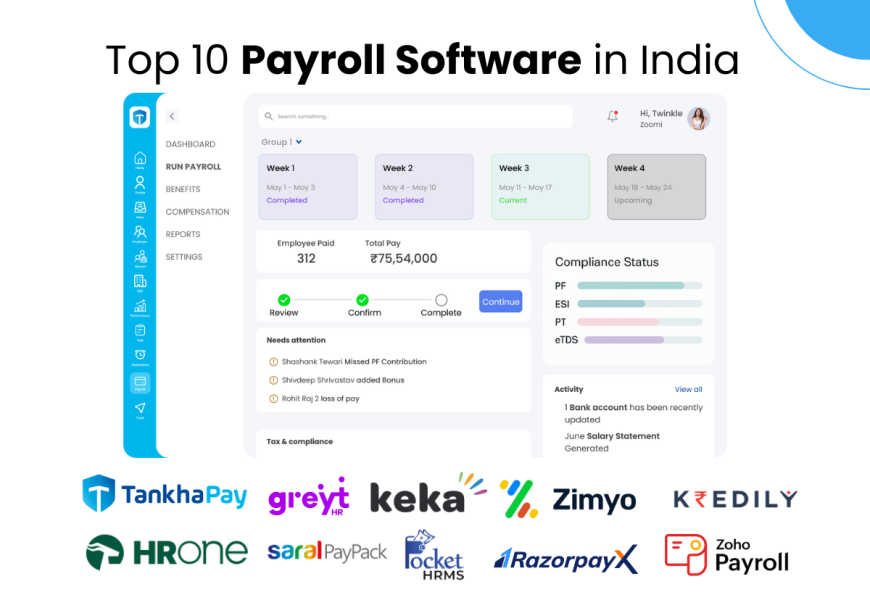
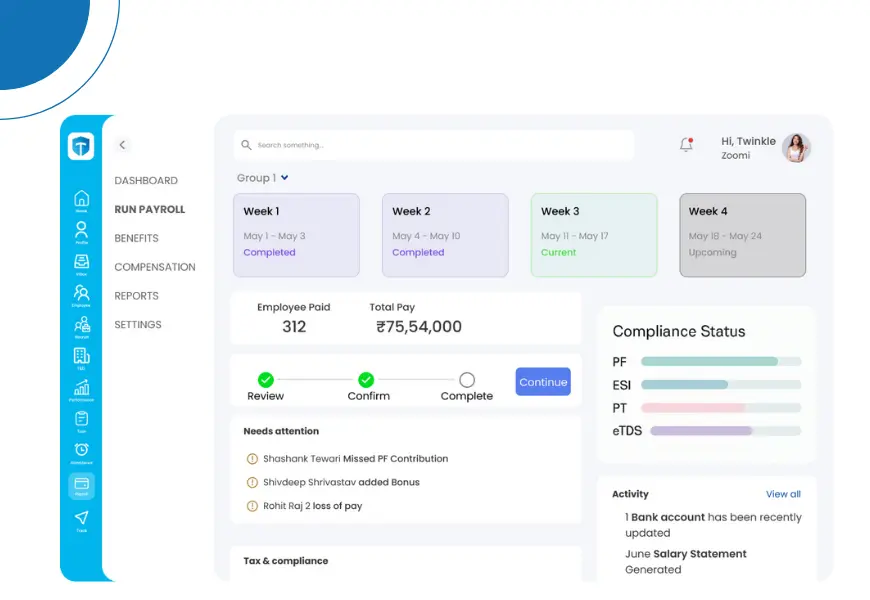
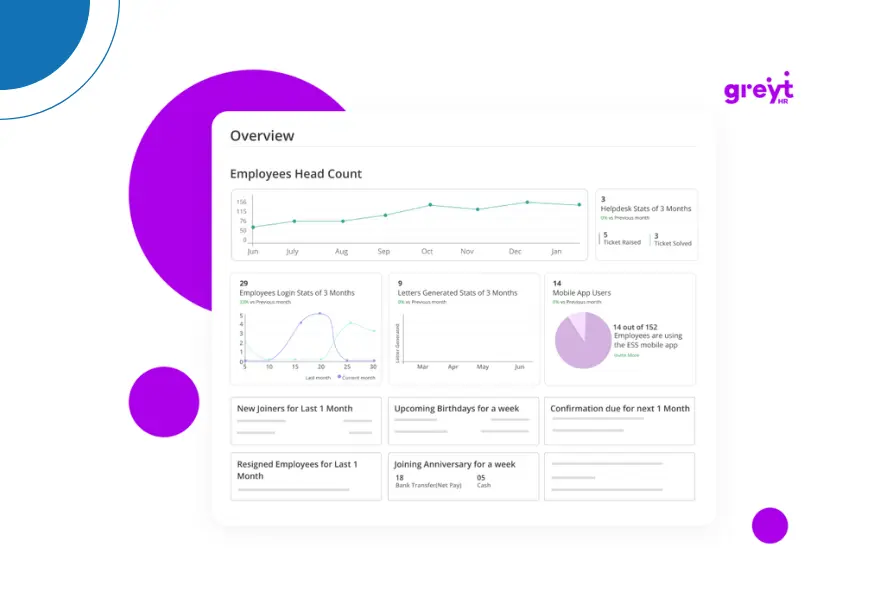
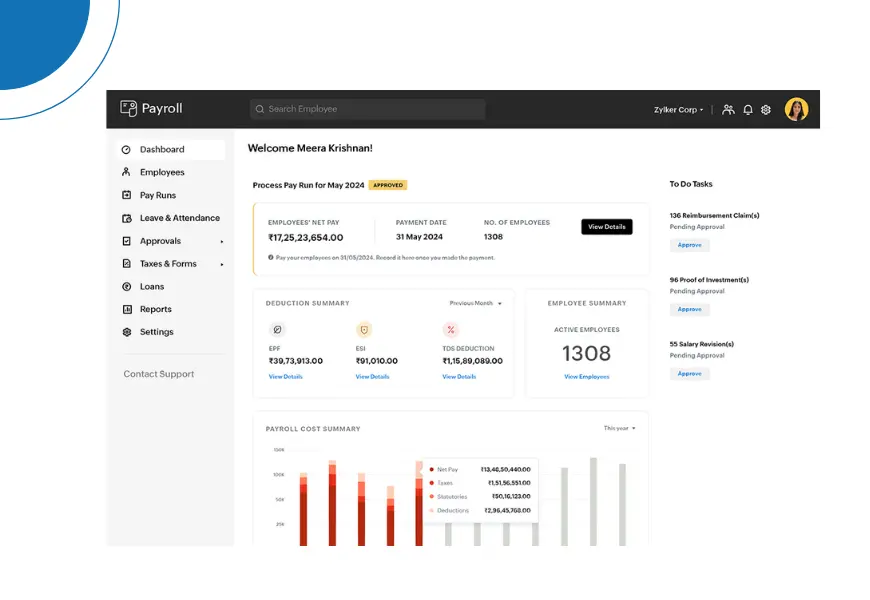
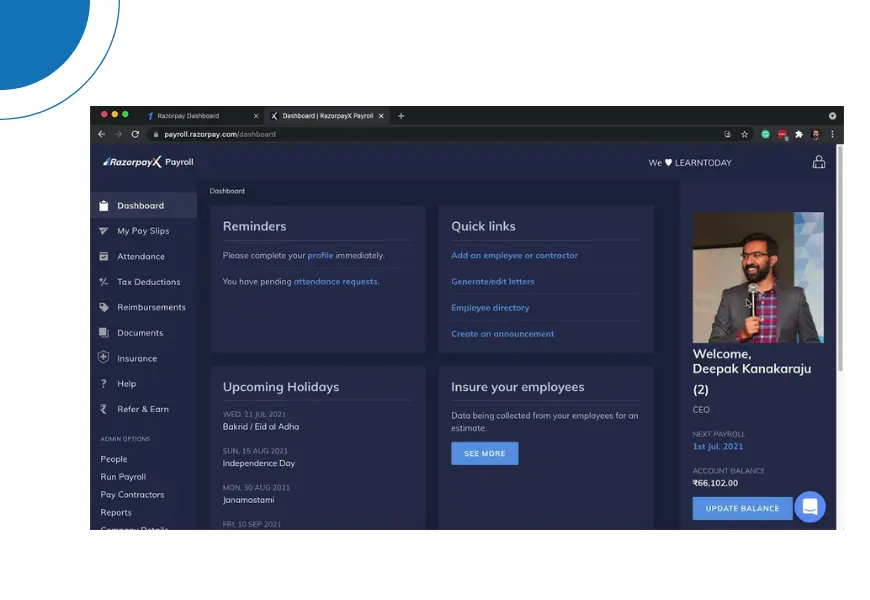
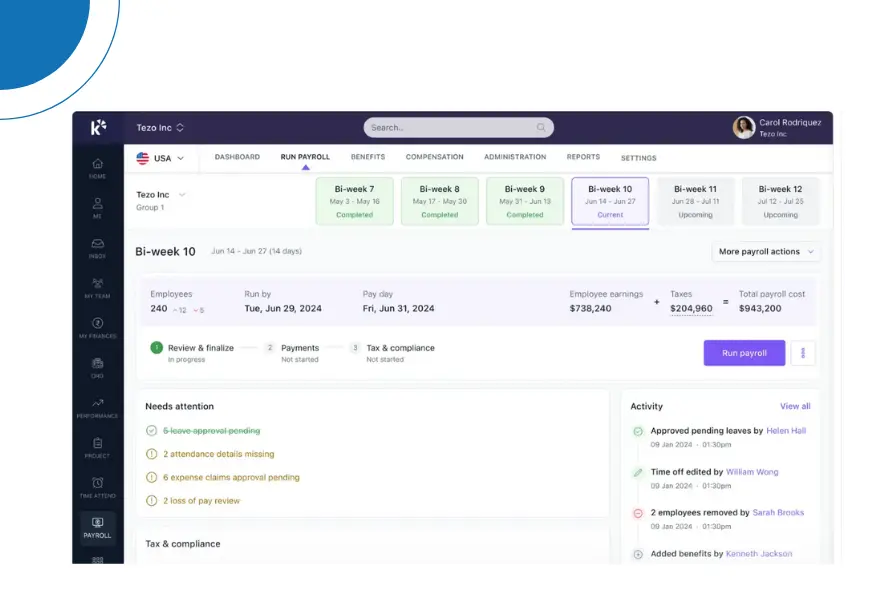
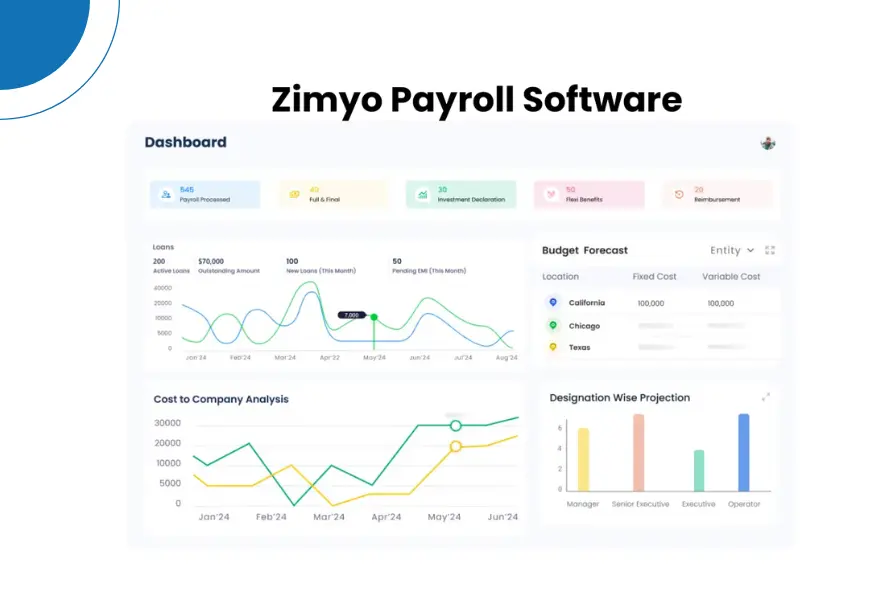
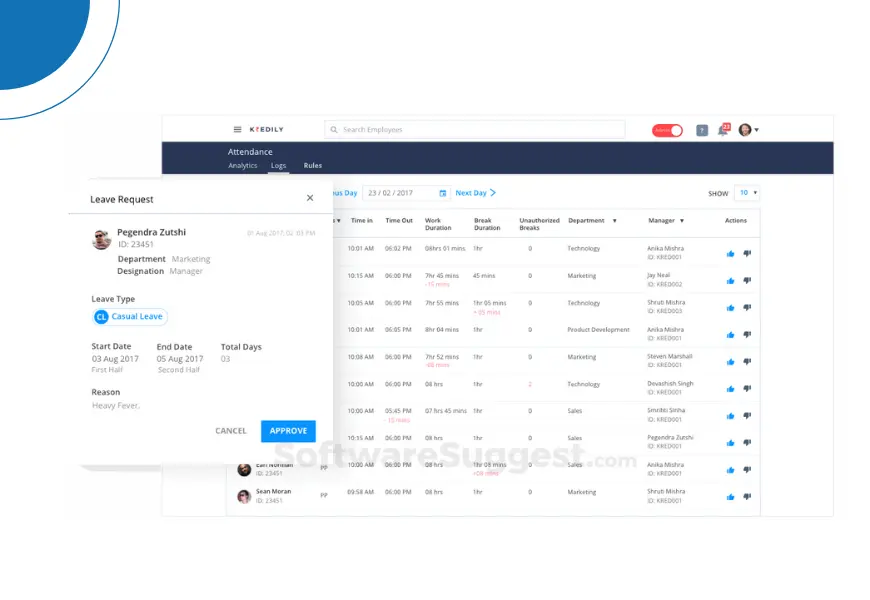
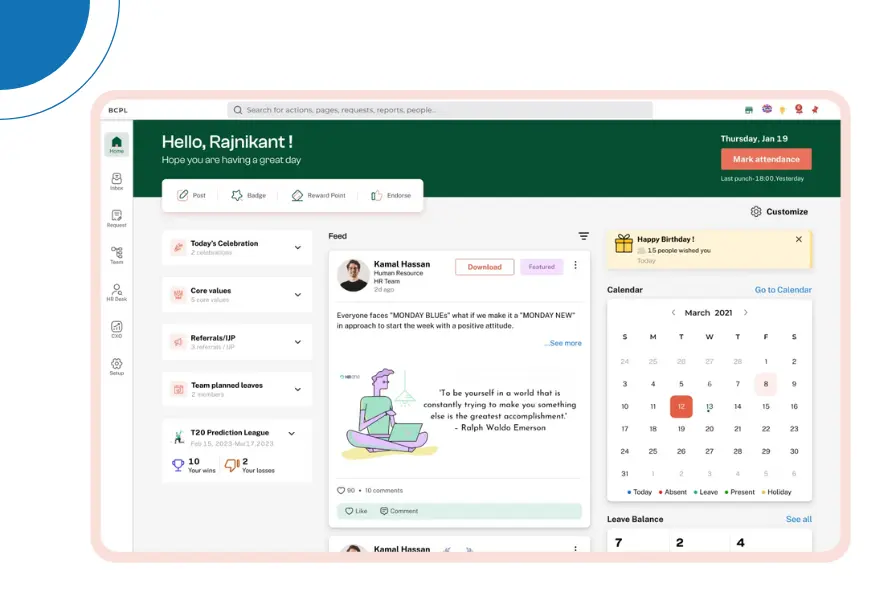

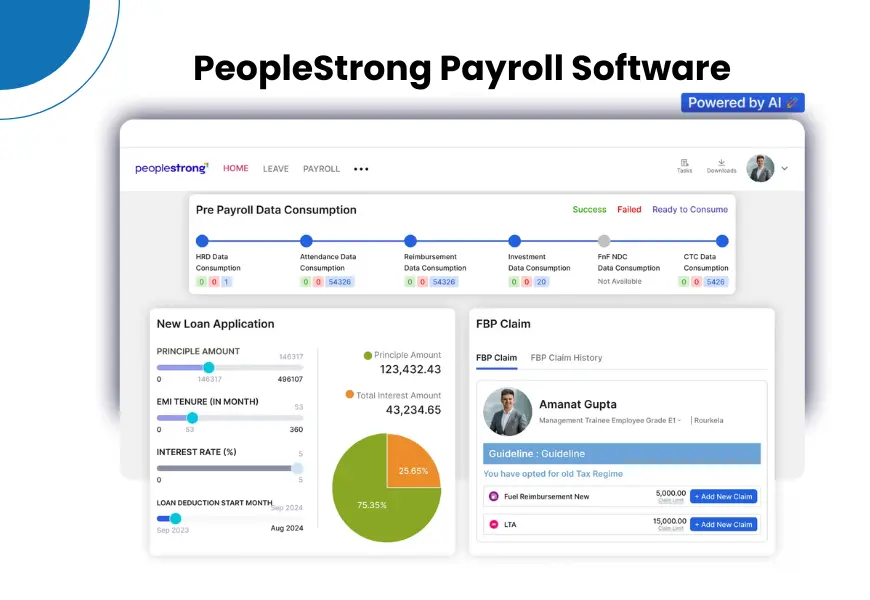

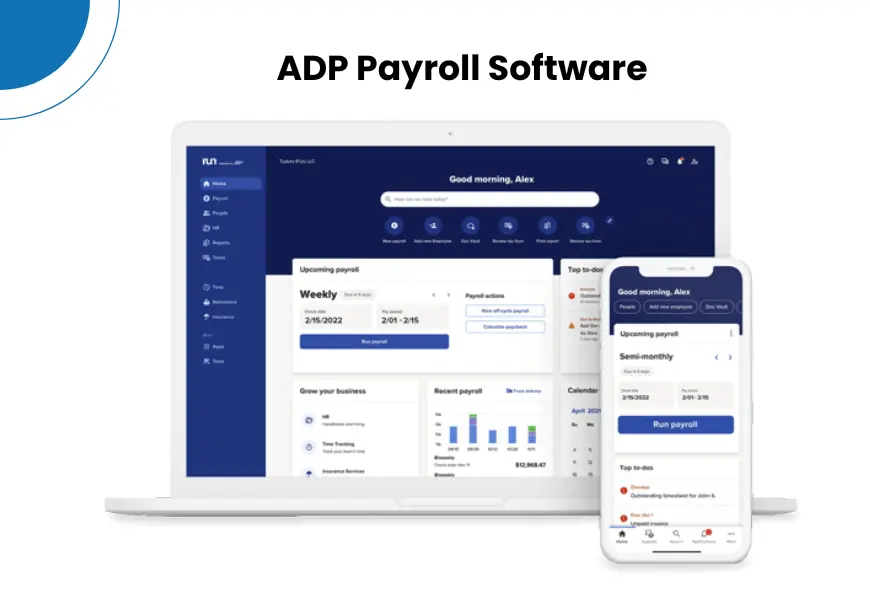

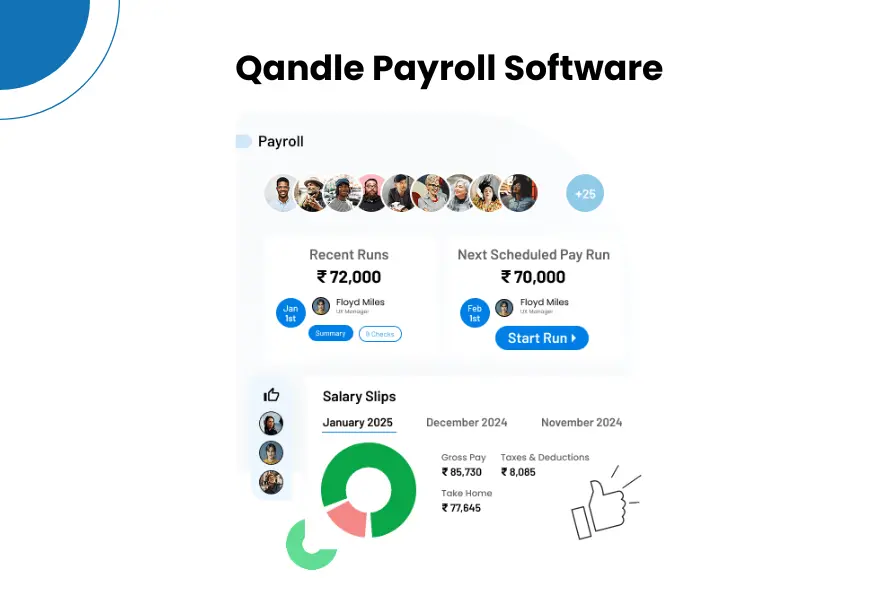
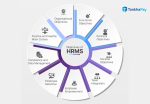
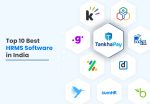
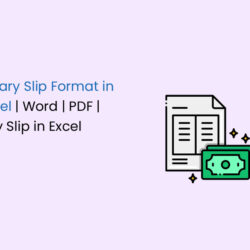


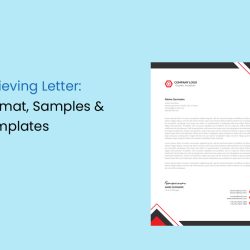
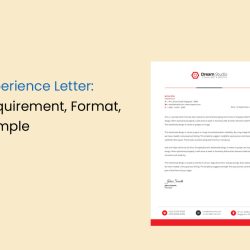




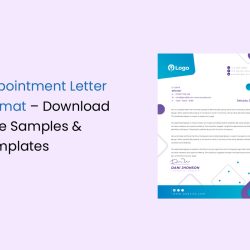
I liked this content. After a thorough read, I must say this is one of the finest articles on Payroll Software in India. I must say please keep writing and educating us.
In this blog, TankhaPay offers a clear overview of Indian payroll software covering GST compliance, automated calculations, statutory reporting, and ease of integration for businesses of all sizes.